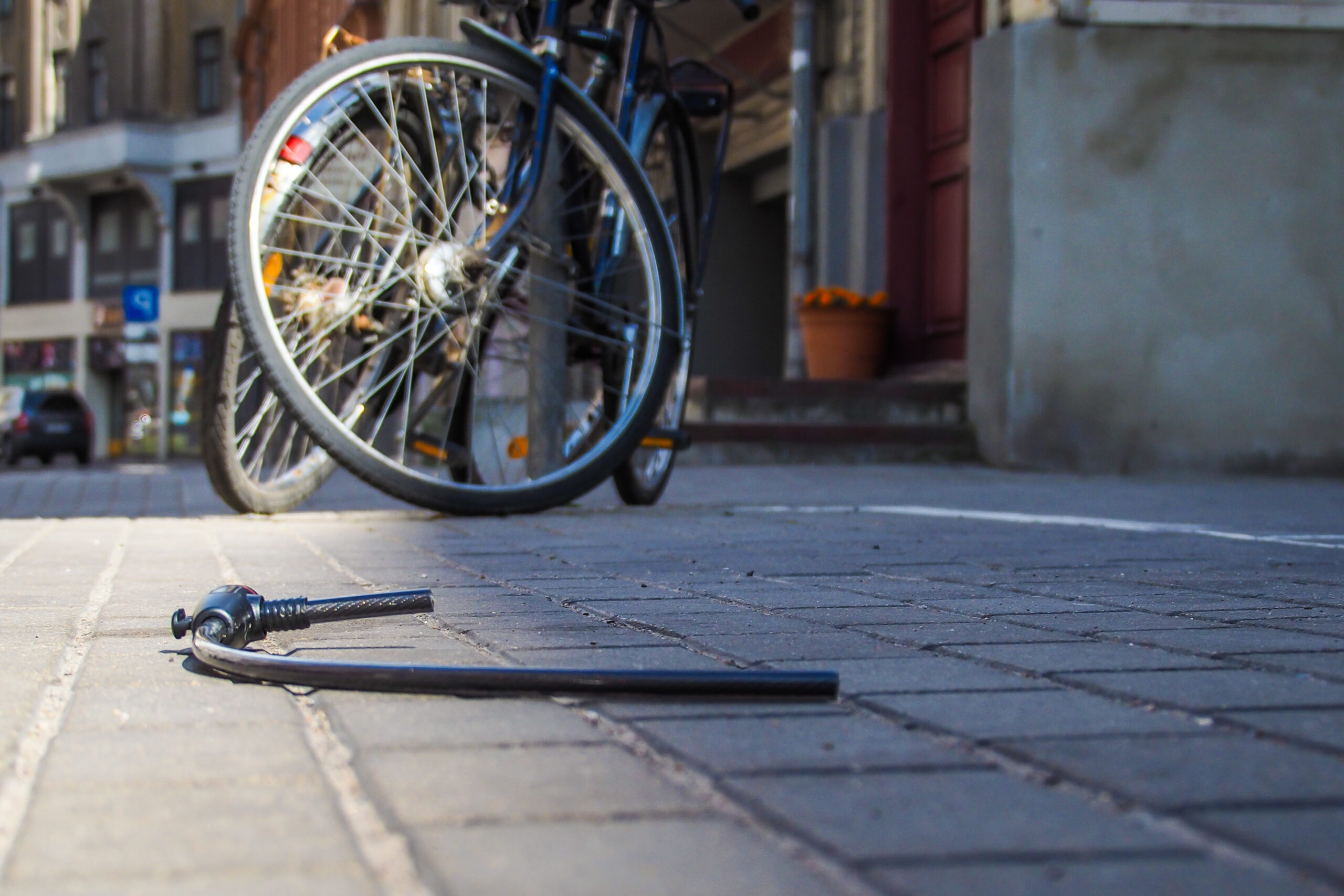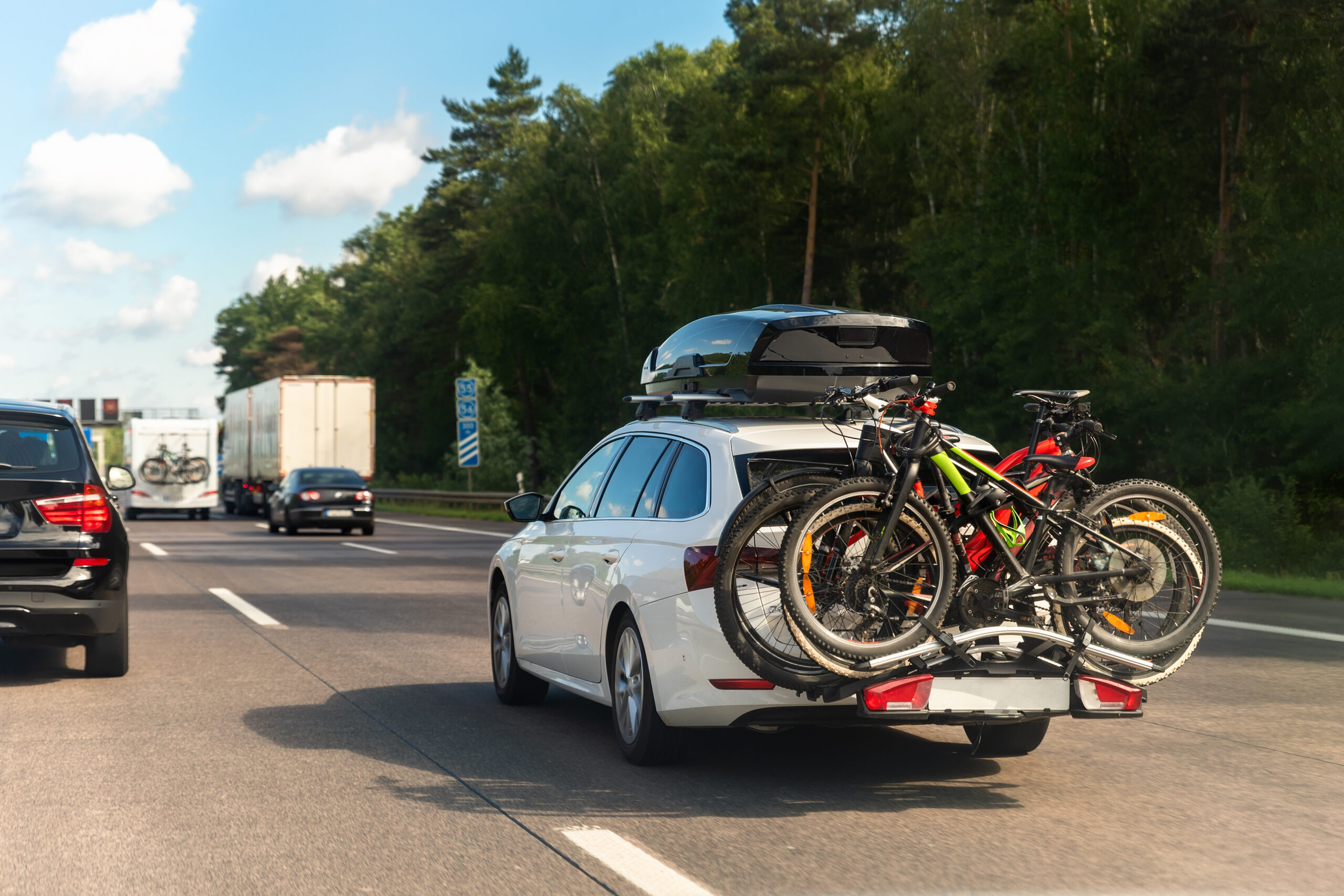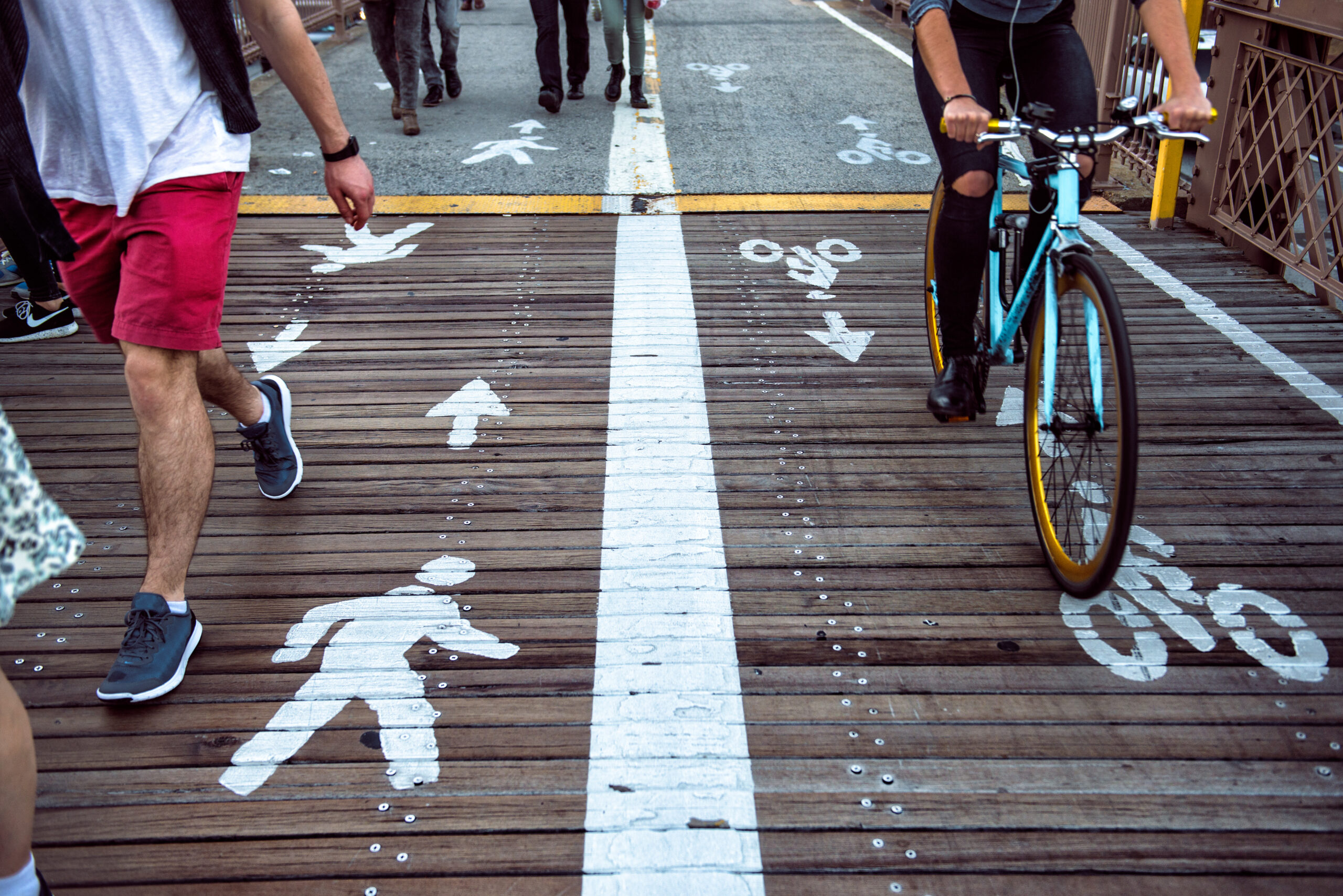This article is produced in association with Velosurance
Bicycle insurance isn’t for everyone, but cycling is becoming increasingly popular, and because of this, the risk of accidents and theft is rising. But, not to be all doom and gloom, we’d argue that more people cycling is fantastic! In fact, recent studies show that increasing numbers of people are riding bikes for a variety of reasons. Be it commuting, day-to-day transport, leisure purposes, exercise or general recreation.
A recent study by Statista (1) showed that by 2021, the number of Americans riding bicycles reached 51.4 million. In the UK, cycling increased during the pandemic. According to Cycling UK (2), ‘between 2015-2019 cycling accounted for 0.9% of all traffic mileage on Britain’s public roads. In 2020, this doubled to 1.8%,’ and Statista reports that 19% of the UK population ride a bike at least once a week (3).

Perhaps unsurprisingly, Europe leads the way in terms of how many people cycle, with the Netherlands, Denmark, Germany and Sweden having the highest numbers of people on bikes. The European Commission reports (4) that ‘survey data from a selection of seven European countries show that 3-28% of all trips are made by cycling, the highest figure being for the Netherlands.’ However, it’s worth noting that it’s difficult to correlate all data to give an exact picture as most countries produce their own data using different methods.
If you don’t have bicycle insurance, there may be multiple reasons you’ve not considered insuring your bike. After all, it isn’t a legal requirement, but have you ever found yourself wondering if it’s something you need? If you want to know more about bicycle insurance and what’s generally covered, this piece is for you. And who better to talk about bicycle insurance than a co-founder of a cycle insurer??
Cycle insurance can be confusing, and not completely straightforward if you require comprehensive cover or want to insure several bikes. That’s where specialist insurers like Velosurance come in, because despite what some might think, bicycle insurance isn’t just for theft.
Global Bike Theft Statistics
So, how much of an issue is bike theft really? Statistically, many of us will have been a victim of bike theft before. If you’ve not had a bike stolen or been involved in any kind of incident, you are certainly fortunate.
Although there are numerous reports out there detailing the number of thefts, they very rarely reflect the actual number, with findings from a UK survey showing (5) that up to 56% of people don’t actually report bike theft to the police. Additional statistics (from the Liberal Democrats) revealed that between June 2021 and June 2022, 74,421 bikes were reported stolen in England and Wales and only 1,239 resulted in a charge or summons (as reported by the Guardian (6)).
In the US, it’s very much the same, with statistics only reflecting crimes actually reported, so the number of bike thefts is likely much higher. FBI crime statistics (7) show that 154,009 bikes were stolen in 2019. During the same year, the bicycle registry, Project 529 (8) reported that during that time 2 million bikes were stolen annually in America. In the EU, the European Commission estimates (9) that ‘4m+ bicycles are stolen in Europe every year, that means 1 every 7 minutes.’

What does bicycle insurance cover?
Although this will differ depending on the insurer and where you are in the world, there are several options out there. Talking through cover with Dave Williams, COO of Velosurance, he summarises what you can expect, “Bicycle insurance offers coverage for damage, loss, or theft of a bicycle. It can provide coverage for a wide range of incidents, including theft, accidental damage, vandalism, liability and medical costs.”
“The coverage can vary depending on the policy and provider, so it’s important to read the terms and conditions carefully.”
Home insurance Vs specialist cycling insurance
As mentioned, many of us will either have insurance as part of our home insurance policy, or via a specialist cycle insurer.
If you have cover as part of your home insurance, Dave points out things to think about, “The general misconception is that bikes are wholly covered by home insurance providers. While not entirely false, it’s both subjective and circumstantial and often takes a claim to find out the truth.”
“Homeowners and renter’s policies usually offer limited coverage for bikes as personal property, with coverage limits varying by carrier and location. Be aware of the specifics, including coverage amounts and types of losses covered, as policies often don’t cover theft away from home and exclude e-bikes seen as ‘motorised vehicles.’ Home policies usually only insure bikes for their current market value, which decreases over time. Riding accidents are almost never covered and racing is outright excluded,” he adds.
Types of bicycle insurance cover
If you opt for cover with your home insurance, be aware that they will rarely have the depth of understanding offered by specialist insurers, so take that into consideration if you want insurance that extends beyond coverage for theft from home. As always, pay close attention to the details of any policy to make sure it covers your needs. If in doubt, request the description and limits of specific coverage in writing.
If you race, travel with your bike, are worried about what happens if you have an accident, or want cover should you be involved in an incident with a third party, a specialist policy will likely be the best option. Below are a few of the different types of bicycle insurance options available.
Travel
If you often travel with your bike, even if it’s not abroad, you’ll likely want a policy that offers cover whilst your bike is in transit. Dave makes a point that many mountain bikers don’t start their ride from home and often transport bikes to their ride destination, “To access the most epic of adventures, a domestic or even international flight may be required, which puts your bike in the hands of others. A bike insurance policy covers your bike in transit, whether by plane, train, vehicle, or courier.” So consider this, because even if you’re just travelling to trails close to home and something should happen, with the right cover in place, you should be able to claim.

Event insurance (races)
If you race or take part in cycling events, having your bikes on your home insurance policy probably won’t offer the right cover. In fact, although it will likely cost more, you’ll be covered for a lot more (such as injury, personal liability, travel and for kit and parts) with a specialist insurer.
Although it will differ between providers, with Velosurance, cyclists who travel to events will be covered for several eventualities such as a bike not turning up to a race, Dave explains, “If you travel to an organised event that is 50 or more miles from home and your bike doesn’t get there for any reason outside of your control, such as damage or loss in transit, the policy will reimburse bike rental fees up to $250. If you can’t find a bike to rent for the race, you can receive an entry fee reimbursement of up to $500. If your race can’t be saved, at least you’ll be shielded from a financial loss.”
If you only race or travel abroad on the odd occasion, some insurers will offer an add-on option, so give them a call to discuss and find out what adding something on vs having annual cover would mean for your premium.
Accidents
As riders, we all know accidents happen, and when it comes to accident cover, it should also extend to your bike and kit.
Talking about accidents, Dave explains what you should expect from a specialist insurer based on what Velosurance offers their customers, “A quality bicycle insurance policy should cover all kinds of accidental damage, including those resulting from a crash. And because it’s not unusual for riding apparel and accessories to become torn or broken during a crash, there should be coverage for that, too! If your riding kit, shoes, or any other apparel are damaged in a crash, the policy will cover replacement costs of up to $500.”
Medical
Although we’ve covered accidents above, it’s easy to assume that accidental cover would extend to medical expenses, but in most situations, it’s a separate coverage that one must select. While medical cover isn’t something people in Europe have to worry about, it will still be something to consider if you’re travelling abroad, riding somewhere you need extra cover, or even your own personal circumstances.
However, for those in the US, having the right medical cover is something to take very seriously. Dave outlines what Velosurance offers for those insured with them, “opting for the Medical Payments add-on will cover some of the medical expenses related to the biking accident, such as deductibles and copays left after the major medical pays their share. Different coverage limits are available and should be determined with consideration of primary medical insurance limits.”
Third-party liability
This is an important one to consider. Whilst hurting yourself, or damaging your bike is awful, damaging someone else’s property or even injuring another person is potentially a lot worse.
In the UK, the likes of British Cycling or Cycling UK offer third-party liability cover through their membership programs. This is also something offered as a standalone policy, so if you don’t want cover for what’s detailed above, consider at least getting insurance to protect yourself in this instance.

On certain policies this may be an add-on, so make sure you opt in if this is something you want. In the absence of witnesses, even if you are not at fault, you could end up owing thousands in legal fees, “If your mistake causes another person injury, sickness, damage to their property, or even death, liability coverage acts as a legal defence fund to protect you from any suit that may be brought against you,” Dave explains.
“It is unfortunate, but cyclists tend to get an overwhelming amount of blame when involved in a pedestrian versus bicycle accident, or even when a car is involved.
If an accident results in injuries or property damage, it is likely that the insurance companies will initiate an investigation to determine who is at fault and which insurance company should accept their client’s responsibility for the loss,” he adds.
Is it worth getting bicycle insurance?
There are certainly pros and cons to weigh up, but it comes down to what makes sense for you and your needs. For some, the benefits of getting specialist bicycle insurance far outweigh the cost, for others, it won’t make much sense.
Getting insurance is a personal choice, but something that makes a lot of sense for those who cycle regularly or have expensive bikes, as Dave summarises, “With so many uncontrollable variables that can lead to personal injury and accidental damage or total loss of a bike, having an insurance policy that’s specifically been designed to offer bike- and rider-specific coverage makes sense.”
“With policies starting at $100 per year and averaging at around $350 per year for a $5,000 bike and options that can also help close gaps found in other insurance policies you might already have, it makes even more sense,” he adds.
To put things in perspective, here are some pros and cons to help you decide whether specialist bicycle insurance is for you:
Pros:
- Provides coverages not offered with generic policies (e.g. home insurance)
- As a standalone policy, claims do not impact home or rental policies
- Covers theft
- Covers e-bikes
- Covers racing
- Covers apparel and accessories
- Covers damage in transit
- Event coverage
- Covers expensive and multiple bikes
- If something happens, insurance means you won’t be liable to pay the full cost of a claim
Cons:
- Potentially pricey for high-end bikes or high-limit optional coverage
- You may need to meet certain criteria to be covered
- Some insurers will offer different levels of cover, the highest will inevitably come with the highest premiums
- There may be a limit on the total value of bikes you can cover
- You may be limited to how many claims you can make
As mentioned, bicycle insurance isn’t a required purchase, but what happens if you don’t have insurance?
For many, not having insurance and having a bike stolen could mean not being able to continue riding, “If your bike isn’t insured and is damaged in a crash or stolen, you’ll have no choice but to replace it out-of-pocket, or give up cycling. If you are unlucky enough to cause harm to someone’s property or a personal injury while riding a bicycle, you may be named in a lawsuit and will have to pay for legal defence,” says Dave.
When it comes to injuring someone else, or damaging property, this can be very costly explains Dave, “In the US costs to defend a personal liability suit vary from $150 to $400 per hour for 40-60 hours of billable time, on average, with legal bills ranging in $6,000 to $25,000. Personal injury claims involving cyclists have been known to surpass $300,000.”

Things to Be Aware of When Choosing Bicycle Insurance
Arguably the reason many of us get bicycle insurance in the first place is to have cover if the worst should happen. But what should you consider if you’re looking at cycle insurance policies? Before deciding who to go with, ask yourself a few questions:
Do you require cover away from home?
If you do, check the policy wording (or give the insurer a call) to find out where you’ll be covered. Some policies will only cover you at home. There will also be certain stipulations for where you can leave it, for how long, and for things such as which lock you’ll need. Always check your policy wording!
Do you need a specialist policy or can you get adequate cover with your home insurance?
If you only ride every once in a while and your bike doesn’t have the highest monetary value, a specialist cycling insurer might not be what you need.
Will the policy cover you for the full value of your bike?
Certain policies won’t cover like-for-like and the value of your bike will depreciate, so if you have an expensive bike, or something you’ve customised and regularly change, you risk being out of pocket. In case of a claim, you’ll almost always have to provide proof of purchase, so keep hold of any receipts.
It’s also a good idea to take photos and make a note of frame numbers so you have them if you need to claim.
Where do you leave your bike whilst it’s unattended?
Some policies will only cover you for a certain length of time if your bike is left unattended. For example, you may only be able to leave your bike for a maximum number of hours at a train station, and if you go beyond that and your bike is stolen or damaged, you may not be able to claim.
You’ll need to think about where you leave your bike most often and check policy wording or with the insurer to see if your bike would be covered.
Always Read the Small Print
References
- https://www.statista.com/statistics/191204/participants-in-bicycling-in-the-us-since-2006/
- https://www.cyclinguk.org/statistics
- https://www.statista.com/topics/3883/electric-bicycle-usage-in-europe/#dossier-chapter2
- https://road-safety.transport.ec.europa.eu/eu-road-safety-policy/priorities/safe-road-use/cyclists/walking-and-cycling-transport-modes_en#_1.2.2_Cycling_as
- https://thebestbikelock.com/bike-theft-statistics-uk/
- https://www.theguardian.com/uk-news/2023/jan/02/suspect-identified-in-only-one-in-10-bicycle-theft-cases-in-england-and-wales
- https://ucr.fbi.gov/crime-in-the-u.s/2019/crime-in-the-u.s.-2019/topic-pages/tables/table-7
- https://cyclingindustry.news/bicycle-theft-surpasses-2-million-a-year-in-the-usa/
- https://cordis.europa.eu/project/id/815653
This article is produced in association with Velosurance